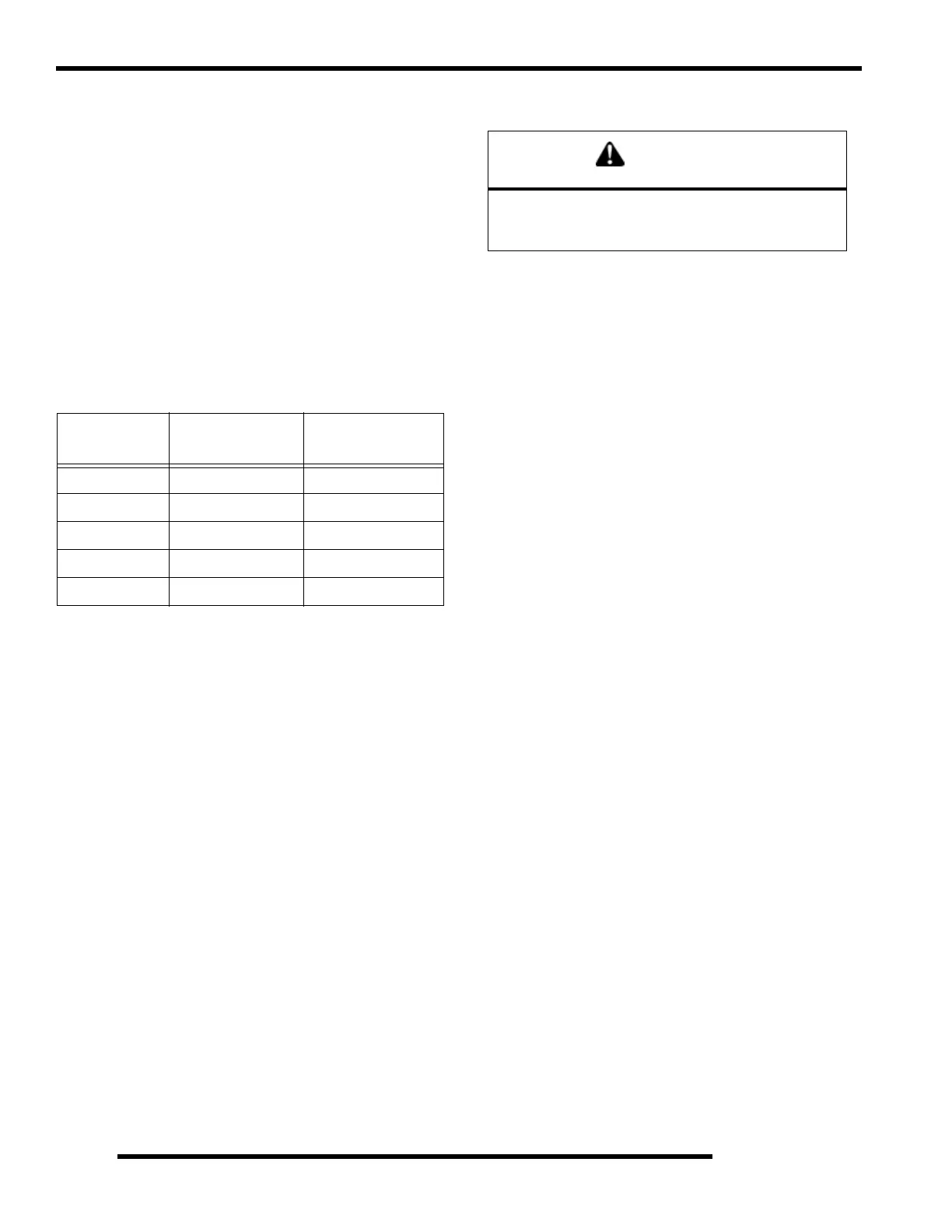10.52
ELECTRICAL
Low Maintenance Battery - OCV- Open
Circuit Voltage Test
Battery voltage should be checked with a digital multitester.
Readings of 12.8 volts or less require further battery testing and
charging. See charts and Load Test.
NOTE: Lead-acid batteries should be kept at or near
a full charge as possible. If the battery is stored or
used in a partially charged condition, or with low
electrolyte levels, hard crystal sulfation will form on
the plates, reducing the efficiency and service life of
the battery.
NOTE: Use a voltmeter or multimeter to test battery
voltage.
* Measurement at 80
F
NOTE: Subtract .01 from the specific gravity reading
at 40
F.
Low Maintenance Battery Load Test
NOTE: This test can only be performed on machines
with electric starters. This test cannot be performed
with an engine or starting system that is not working
properly.
A battery may indicate a full charge condition in the OCV test
and the specific gravity test, but still may not have the storage
capacity necessary to properly function in the electrical system.
For this reason, a battery capacity or load test should be
conducted whenever poor battery performance is encountered.
To perform this test:
1. Hook a multitester to the battery in the same manner as was
done in the OCV test. The reading should be 12.8 volts or
greater.
2. Engage the starter and observe the battery voltage while
cranking the engine. Continue the test for 15 seconds.
3. During cranking the observed voltage should not drop
below 9.5 volts.
4. If the beginning voltage is 12.8 volts or higher and the
cranking voltage drops below 9.5 volts during the test,
replace the battery.
OPEN CIRCUIT VOLTAGE
STATE OF
C
HARGE
LOW M AINTENANCE
B
ATTERY
CONVENTIONAL
B
ATTERY
100 % 13.0V 12.70V
75% Charged 12.80V 12.50V
50% 12.50V 12.20V
25% 12.20V 12.0V
0% Charged less than 12.0V less than 11.9V
CAUTION
To prevent shock or component damage, remove
spark plug high tension leads and connect securely
to engine ground before proceeding.

